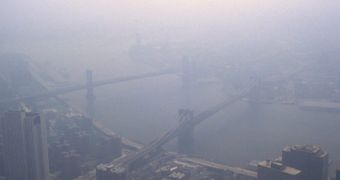In a paper published in the December 4 issue of the top scientific journal Nature Climate Change, experts with the Global Carbon Project (GCP) say that carbon emissions are continuing to increase around the world, threatening to warm the planet by more than 2 degrees Celsius.
This scenario is to be avoided at all costs, the team adds, since exceeding this target would set in motion a series of natural phenomena and processes that would make it a lot easier for the atmosphere to get progressively warmer.
Glaciers would melt a lot faster in the Arctic, Antarctica and Greenland, and the process would take place at an accelerated pace due to a number of positive feedback loops. Methane would also be released from Arctic permafrost, further contributing to warming.
These things are happening even now, but there is still hope of stopping these natural cycles before they become self-sustaining. But, in order to do that, we have to act now, and that seems unlikely to happen in this current economic climate.
According to the new report, man-made carbon dioxide (CO2) emissions have increased by just under 50 percent over the past 20 years alone. The document was compiled by a team including scientists from the University of East Anglia (UEA) Tyndall Center for Climate Change Research.
Last year alone, average CO2 emissions increased by nearly 6 percent from 2009, and by 49 percent total, since 1990. Between 2000 and 2010, CO2 emissions have risen at a rather steady rate of 3.1 percent annually, Science Daily reports.
These rates of increase are nearly three times higher than the one recorded between 1990 and 2000, indicating that the rate at which we are polluting the world is increasing rather than subduing.
However, the most remarkable conclusion in the new study was that carbon emissions exceeded the 10 billion ton mark in 2010. This means that 36.7 billion tons of carbon dioxide were released into the air from power plants, deforestation, cement production, the permafrost and other sources.
The international research team adds that China, the United States, India, the Russian Federation and the European Union remained the world's largest polluters, followed by emerging economies and the Third World.
“Global CO2 emissions since 2000 are tracking the high end of the projections used by the Intergovernmental Panel on Climate Change, which far exceed two degrees warming by 2100,” UEA professor and study co-author Corinne Le Quéré explains. She is the director of the TCCCR.
“Yet governments have pledged to keep warming below two degrees to avoid the most dangerous aspects of climate change such as widespread water stress and sea level rise, and increases in extreme climatic events,” the expert concludes.

 14 DAY TRIAL //
14 DAY TRIAL //